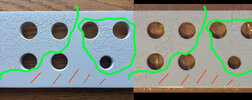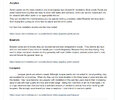Starbase101
Sr Member
It is MDF, with a primer coat, sealer primer, then another primer coat, then the gray color coat, and everything is fine up to that point - no cracking. It is the satin clear coat that is cracking up when applied over the gray paint, same painting conditions as when applying the gray paint. It is cracking all over the board, I simply photographed the same area. I had no problems with the cabinet and the backsides of the door and buttons face, it's just the front sides of these last two pieces that will just not take the clear coat as all the other surfaces did. They are sanded down again and drying in the house near a furnace vent for applying gray paint again tomorrow.


